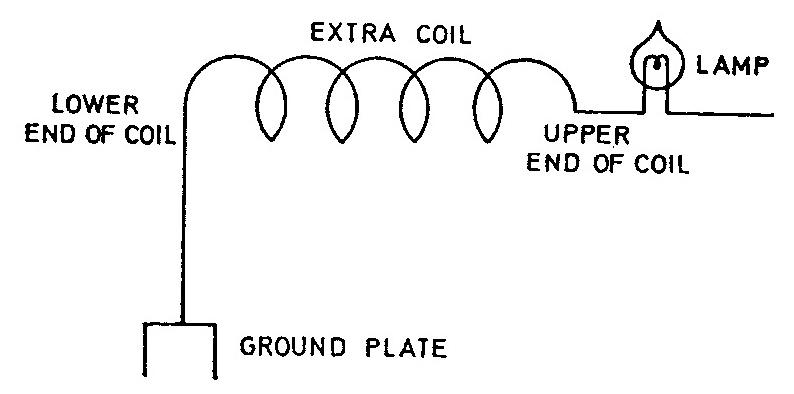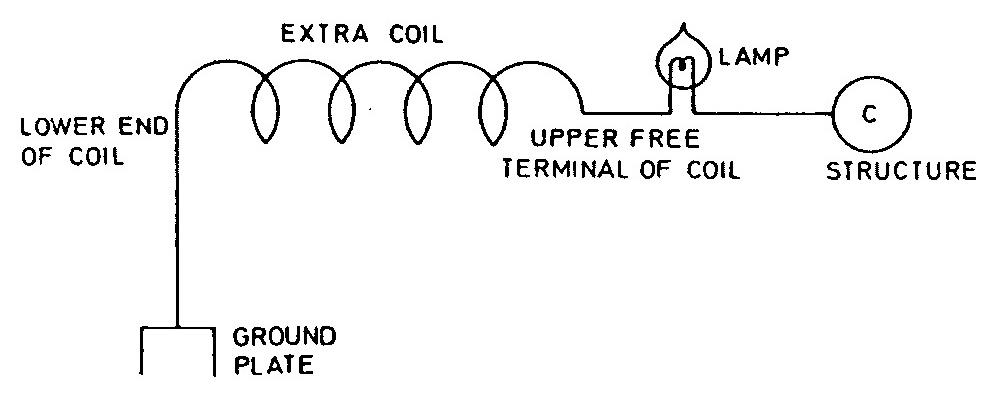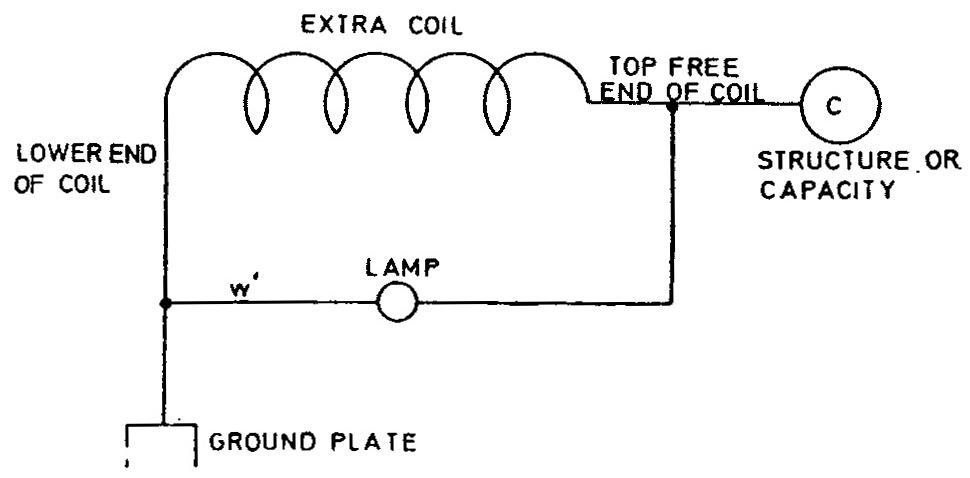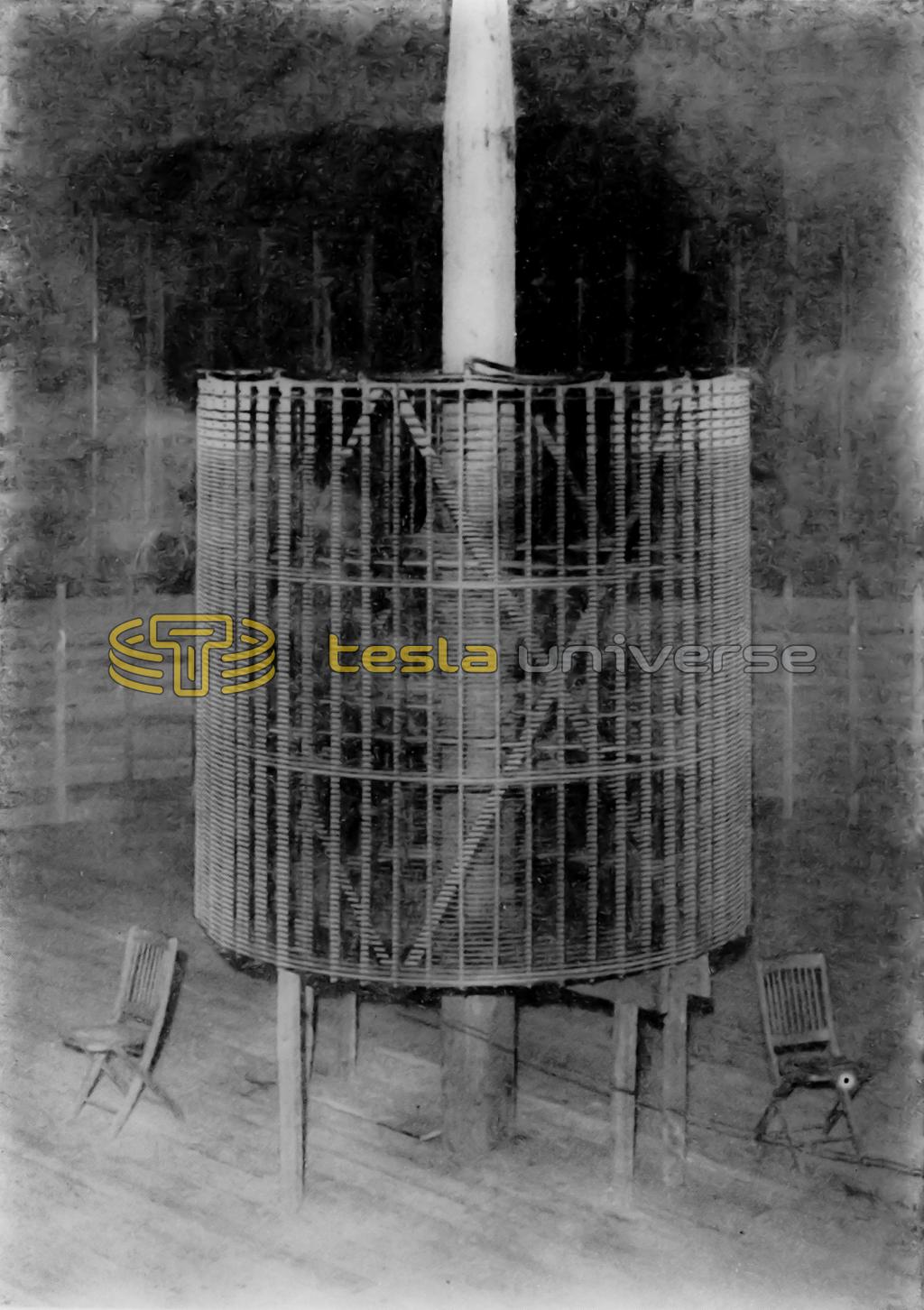
Nikola Tesla Books
Related content from pages
XXVII. This photograph shows an incandescent lamp 16 c.p., 100 V connected with one of its terminals to the top or free end of the extra coil, the lower end of the latter being connected to the ground plate. The carbon filament is brought to incandescence by the currents transmitted from the ground plate and the rarefied gas is also glowing as evident from the photograph. It is instructive to note the great actinic power of the glowing gas which, though appearing to the eye of feeble luminosity as compared with the lamp filament, nevertheless impresses the plate at least as strongly, if not more so, than the incandescent filament.
In many experiments made a few years ago I observed this and also that certain gases are particularly adapted to impress the plate. This fact, again observed, impresses me more and more with the value of powerfully excited vacuum tubes for purposes of photography. Ultimately, by perfecting the apparatus and selecting properly the gas in the tube, we must make the photographer independent of sunlight and enable him to repeat his operations under exactly the same conditions, which is almost indispensable in order to attain the best results. Such tubes will, however, enable him to regulate the conditions and adjust the light effects at will. Such a facility would offer a very great advantage to the artist as with the sunlight, particularly in large cities where the air is not very pure, he has to rely much on chance and where it is almost impossible for him to perform two successive operations under the same conditions or to adjust beforehand the light effects. The photograph described shows also the high actinic power of streamers when they are of a bluish or violet color as frequently, which is the case in this instance. The red streamers are comparatively very slow in their action, but it should be stated that apart from the color the action on the plate is determined much by the power or intensity of the streamers. Thus with the powerful apparatus which I have perfected here the actinic rays are much more powerful than with the New York apparatus. In the experiment illustrated the results would have been the same if both of the terminals of the lamp would have been connected to the free end of the “extra coil” instead of only one, as illustrated in the diagram, which is added for the purpose of showing more clearly how the connections in this case were made.
Now, as to the other particulars of the experiment, the capacity in the primary or exciting circuit was 3 tanks on each side or 1 1/2 tanks total, that is 54 bottles or 54 x 0.0009 = 0.0486 mfd. As to inductance of the exciting circuit there was the primary turn with closed secondary = 41,000 cm. and 5 3/4 turns of regulating coil, including connections, making an inductance, according to the table, of 17,684 cm, that is, the
This will be apparent from another photograph which is marked XXVIII. In this instance the same connections were used as before, only the free terminal of the lamp was connected by a wire to the structure of iron pipes above. The wire can be scarcely distinguished. In this experiment resonance with the exciting circuit was obtained with 6 tanks on each side, this would mean a capacity of three tanks or 108 bottles = 108 x 0.0009 = 0.0972 mfd.
The inductance of the exciting circuit comprised a primary
turn with secondary short-circuited = 41,000 cm, as before, and all the turns of the regulating coil with connections, that is about 85,000 cm, giving total inductance at 41,000 + 85,000 = 126,000 cm or = $! {126 \over 10^{6}} $! henry. From this follows
$! {{2 \pi \over 10^{3}} \sqrt{0.0972 \times {126 \over 10^{6}}}} $! = $! {{2 \pi \over 10^{6}} \sqrt{12.2472}} $! = $! {{6.28 \times 3.5} \over 10^{6}} $! = $! {21.98 \over 10^{6}} $!
and
n = 45,496 or approx. 45,500 = n.
As will be seen from the consideration of the diagram above, in this experiment the entire energy supplied to the structure or capacity C had to pass through the lamp. Suppose the latter to consume 50 watts, and taking the capacity C with reference to previous estimates roughly at 500 cm. with the protecting hood, and designating with P again the potential to which the structure is charged, we have
50 = $! {{500 \over {9 \times 10^{11}}} \times {{p^{2} \times 45,500 \times 2} \over 2}} $! or P2 = $! {{9 \times 10^{8}} \over 455} $!
and
P = $! {{3 \times 10^{4}} \over \sqrt{455}} $! = $! {{3 \times 10^{4}} \over 21.3} $!
approx. or = 1409 volts = P, which is a very small pressure indeed. This pressure could have been, of course, still further reduced by using a resonating circuit of still higher frequency. In the manner just described and illustrated a great many lamps could have been lighted by the vibrations transmitted to the ground and some of the facts pointed out before will enable one to make an approximate estimate in this respect. However, by connecting the “extra coil” as in normal operation, that is, to the free end of the secondary instead of to the ground, a number of lamps might have been lighted corresponding to the full output of the oscillator, say, one thousand lamps or more. Even through the ground, as in the experiment described, the action of the exciting circuit was so intense that the current of the supply transformers had to be cut down to but a very small fraction of the current taken by full output.
It should be remarked that also in the experiment described before (Plate XXVII.) a considerable number of lamps might have been lighted, but not nearly as many as in the case presently described, owing to the very small capacity of the lamps, as before stated.




